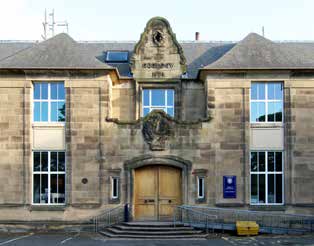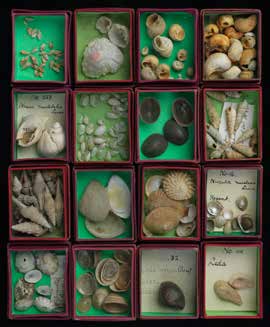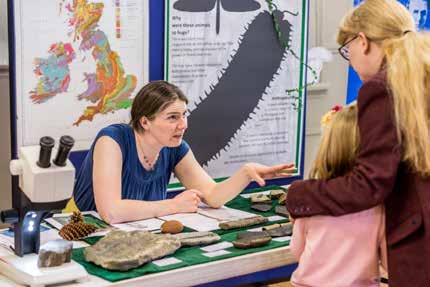Legend has it that the Grant Institute, which houses the Cockburn Geological Museum and the University of Edinburgh’s School of GeoSciences, was funded by the man who invented digestive biscuits. It is part of a group of buildings called The King’s Buildings, and was designed by the famous 20th century Scottish architects Sir Robert Lorimer and John Fraser Matthew. Building work took place from 1926 to 1932. Upon the opening of the Museum, it housed the University’s first gathering of historical mineralogy, palaeontology and instrument collections, many of which pre-date the building. It also contained the University’s then-existing collection of teaching material.

The Museum comprises over 130,000 specimens and other materials, from rare minerals to Neolithic tools, Australian graptolites and Carboniferous corals. The historic nature of the collections means that the Museum houses multiple specimens from sites that are either no longer accessible or have been exhausted. Particularly noteworthy collections include the Lyell collection, consisting of stone artefacts, meteorites, rocks and fossils collected by Sir Charles Lyell (1797–1875); the Currie mineral collection from Dr James Currie; and the Davidson mineral collection from James Davidson.

The palaeontological collection consists of over 10,000 specimens, including fish, reptiles, trilobites, brachiopods, molluscs, corals, sponges, foraminifera and plants. Within this are the Jehu-Campbell Collection of Highland Border Fossils and the John Smith of Dalry Fossil Collection, comprising Dalradian graptolites and brachiopods, and Carboniferous fossils from Ayrshire, respectively. The Museum also has an ‘original’ Whitby snakestone. Although largely housing historic collections, the Museum is still growing by the archiving of recently studied specimens.

The Cockburn prides itself in its involvement with the public, where it aims to represent the department’s work in volcanology, oceanography and palaeontology. Recent outreach events include the Edinburgh Open Doors Day, where the small Museum attracted over 450 visitors in a single day, with interactive activities for younger visitors including fossil handling, searching for fossils in sand pits, and painting trilobites. The Cockburn was also involved in the Explorathon’s Curiosity Forest, using a replicate Carboniferous forest to explore past diversity with adults and children alike. Finally, the Museum is keen to explore the links between science, art and place, and collaborates with local artists wishing to unite the three-dimensional structures of minerals and modern art.

Contact the Museum
The Cockburn Geological Museum, School of GeoSciences:
Grant Institute, James Hutton Road, The King’s Buildings, Edinburgh EH9 3JW
The Museum is open 9am to 5pm Monday to Friday, by prior arrangement with the Curator. E-mail: cockburn.museum@ed.ac.uk
On the Web: https://www.ed.ac.uk/geosciences/about/history/museum
The Museum is always looking for volunteers to help document and digitize its collections.
